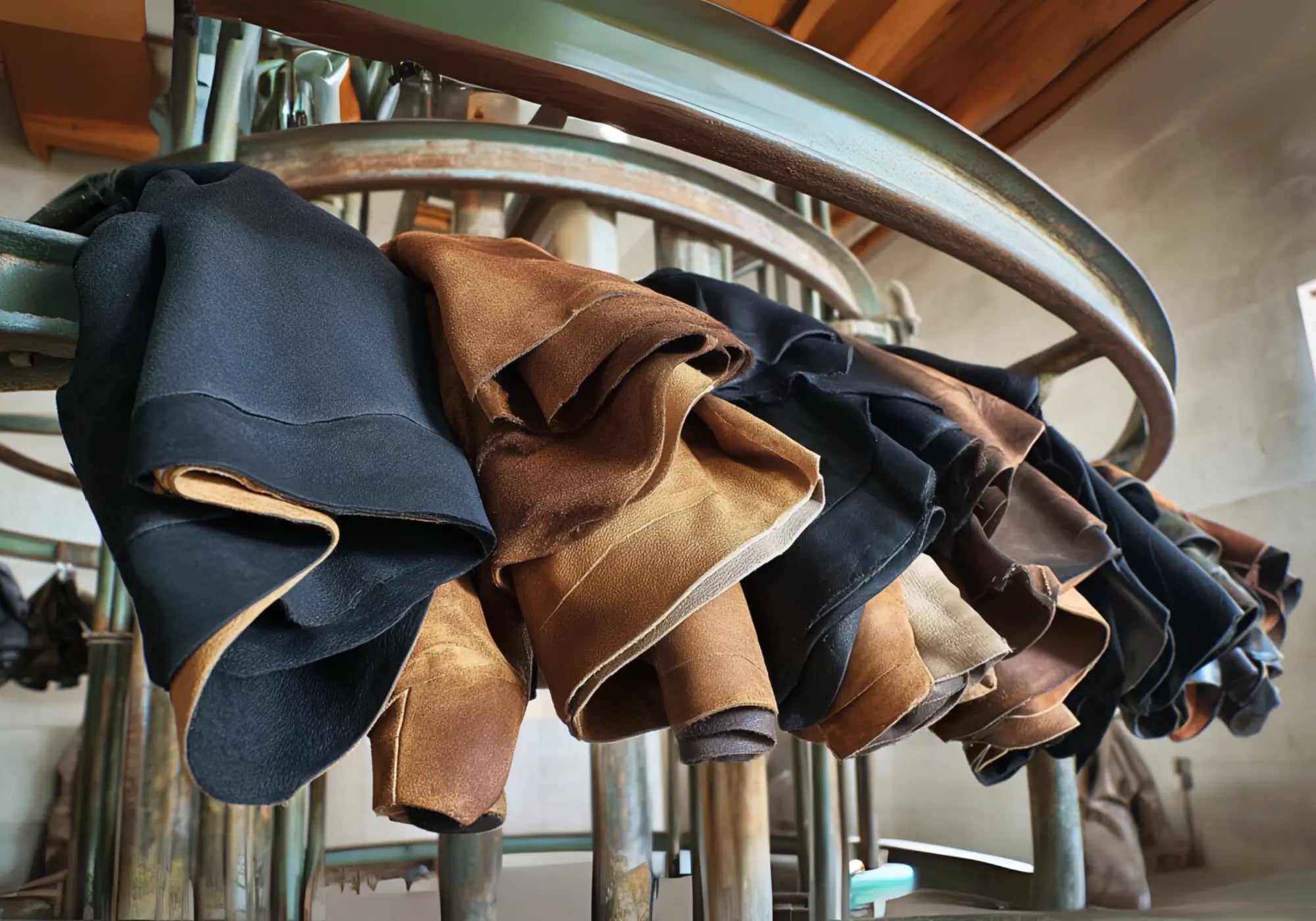OUR MATERIALS
Chosen with care. Built to last.
We believe Material Transparency & Responsible Sourcing is as important as the design.
True luxury goes beyond just looks.
It also considers how it’s made, how long it lasts, and the impact it leaves behind.

RESPONSIBLY SOURCED
Materials That Matter
Every material we use, from our leathers, linings, and zippers: are carefully selected after assessing all options based on their origin, end of life impact, production methods, durability & composition.
They are all responsibly sourced from certified global suppliers, ensuring we deliver quality goods, that perform as well as they look.

These aren’t just any tanneries.
They’re certified and are part of the Leather Working Group (LWG), the global authority on sustainable leather production.
Each tannery undergoes rigorous audits to ensure the highest standards in environmental stewardship, water treatment, chemical management, and worker safety.
“Isn’t leather cruel?”
A crucial question, and one worth answering HONESTLY.
The truth is, no animal is ever killed solely for the leather that we use.
By sourcing Responsible Leather from LWG-Gold & Silver tanneries, we ensure that the hides we use are reclaimed by-products of the meat industry: ethically sourced materials that would otherwise be discarded as waste.
Instead of letting them end up in landfills, LWG-certified tanneries repurpose these hides through responsible, low-impact processes, extending the life of what nature has already given us.

Better for the Planet.
We would love a world where vegan leather often labelled as “cruelty free” & “eco-friendly”, was actually the greener choice it claims itself to be.
But the reality is more complex.
Most synthetic alternatives & vegan leathers come with hidden environmental costs, as they are made from petroleum-based plastics and/or PU, PVC, which are layered with coatings that crack, peel, and shed microplastics over time.
They also have a shorter lifespan due to their synthetic nature, which warrants frequent replacements.
As they are not biodegradable, once discarded, they persist in landfills for years.
This further contributes to the rising problem of global fast fashion waste.
LONG LASTING & LOW IMPACT.
And Better with Time.
In contrast, leather lasts longer, performs better, and ages beautifully.
It is naturally found in nature, develops a unique patina over time, and unlike synthetics, it degrades naturally at the end of its life, having a lower end of life impact.

Our Other Materials
Our linings are made from recycled blended polyester, repurposed from post-consumer and post-industrial plastic waste. This reduces reliance on virgin synthetics that are artificially created to meet demand. It has a soft and smooth finish & is resistant to wear & tear over time.
Every zipper, button, rivet, & fastener is carefully chosen for both smooth movement and performance to ensure the highest standards for quality.

What’s more sustainable than making something once, and making it well?


